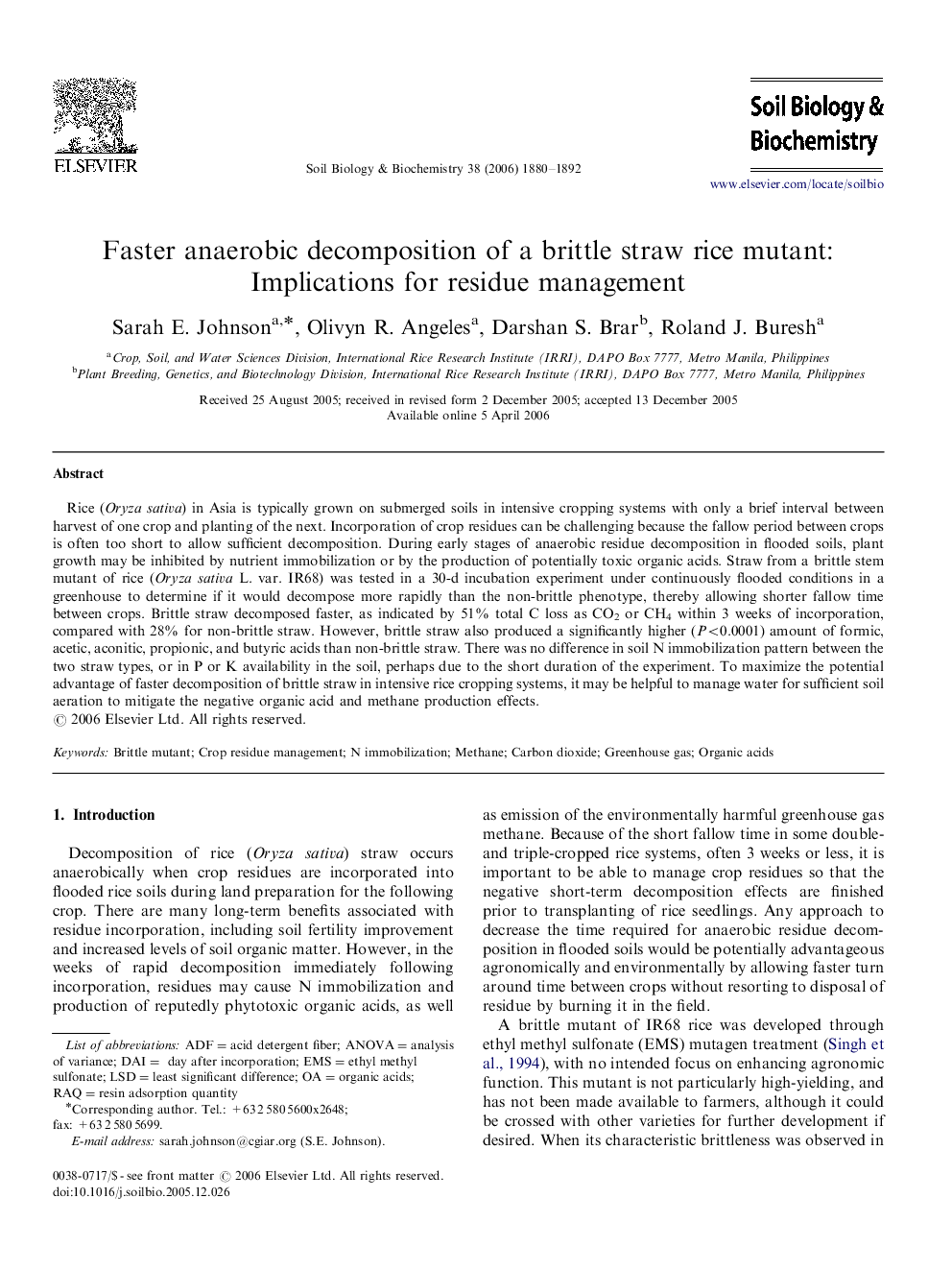| Article ID | Journal | Published Year | Pages | File Type |
|---|---|---|---|---|
| 2026591 | Soil Biology and Biochemistry | 2006 | 13 Pages |
Rice (Oryza sativa) in Asia is typically grown on submerged soils in intensive cropping systems with only a brief interval between harvest of one crop and planting of the next. Incorporation of crop residues can be challenging because the fallow period between crops is often too short to allow sufficient decomposition. During early stages of anaerobic residue decomposition in flooded soils, plant growth may be inhibited by nutrient immobilization or by the production of potentially toxic organic acids. Straw from a brittle stem mutant of rice (Oryza sativa L. var. IR68) was tested in a 30-d incubation experiment under continuously flooded conditions in a greenhouse to determine if it would decompose more rapidly than the non-brittle phenotype, thereby allowing shorter fallow time between crops. Brittle straw decomposed faster, as indicated by 51% total C loss as CO2 or CH4 within 3 weeks of incorporation, compared with 28% for non-brittle straw. However, brittle straw also produced a significantly higher (P<0.0001) amount of formic, acetic, aconitic, propionic, and butyric acids than non-brittle straw. There was no difference in soil N immobilization pattern between the two straw types, or in P or K availability in the soil, perhaps due to the short duration of the experiment. To maximize the potential advantage of faster decomposition of brittle straw in intensive rice cropping systems, it may be helpful to manage water for sufficient soil aeration to mitigate the negative organic acid and methane production effects.
